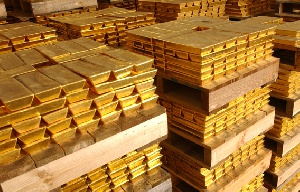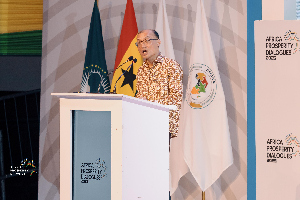The revenue received from the export of minerals by the producing members of the Ghana Chamber of Mines declined to US$ 4.7billion in 2013 from US$ 5.4billion in 2012.
This was due to the persistent drop in the price of gold and rising cost pressure on the mining companies.
Notwithstanding the deterioration in the fundamentals of the gold market, the minerals sub-sector continued to underwrite economic progress in the country, the chamber said.
This was contained in a detailed report published by the Chamber on payments made by the mining industry during the 2013 production year.
The publication is part of the Chamber's pursuit of transparency in payments and receipts for the mining sector in Ghana.
It covers direct statutory and voluntary payments made to government, suppliers both local and foreign but locally registered in the country, District assemblies and employees in 2013.
Total mineral exports amounted to US$5.13billion, representing 37.6 percent of gross merchandise exports -- the largest by any export commodity.
Total tax revenue mobilised from the minerals sector by the Ghana Revenue Authority amounted to approximated GH?1.1, representing 18.7 percent of direct tax and 14.3 percent of total domestic revenue.
About 68 percent of the realised revenue from the export of minerals was returned to the country through the commercial banks and the Bank of Ghana -- far in excess of the statutory 25 percent. The big ticket expenditures of mineral revenue were as follows:
On the development of mining communities, the Chamber said only ten percent of the mineral royalties paid by mining companies is ploughed back into the mining communities.
Out of this 10 percent, the Office of the Administrator of Stool Lands takes one percent for its administrative expenses.
The remaining nine percent is disbursed to host communities as follows: District Assemblies -- 4.95 percent; Traditional Councils -- 1.8 percent; and Stools -- 2.25 percent.
The Chamber believes that the 4.95 percent of mineral royalty returned to district assemblies is woefully inadequate for the stimulation of infrastructural development in mining communities.
The Chamber is therefore advocating 30 percent of mineral royalties to be returned to mining areas over a specific period of time -- and ring-fenced to specific infrastructural projects in order to catalyse the socio-economic development of mining districts.
Business News of Monday, 30 June 2014
Source: B&FT

















